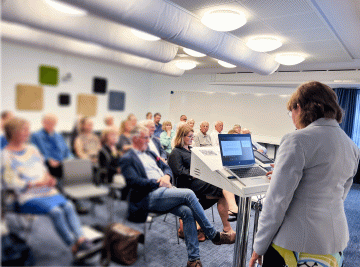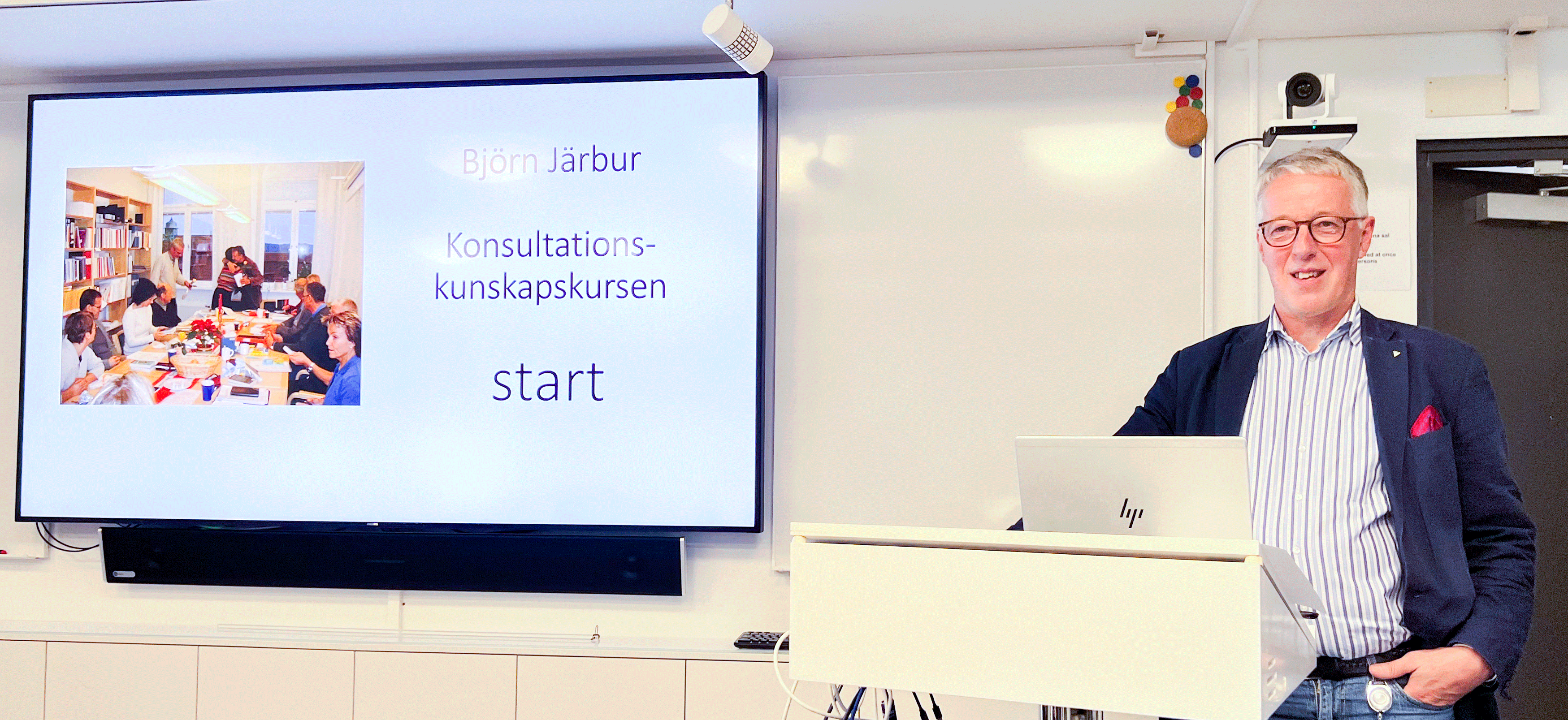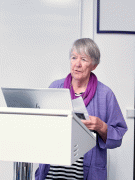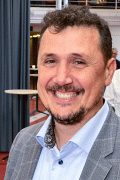EDUCATION. After thirty years the consultation skills course has now been held for the last time, although the new medical program revives the subject in different forms. The course management team came together to reminisce and celebrate with a seminar and dinner.
Following a drawn-out process, the course first began in spring 1993. The medical program in Gothenburg placed considerable emphasis on the natural sciences, giving students a solid foundation before introducing the more clinical aspects of the profession. Views about the best ways to train physicians began to change in the late 1980s, and Linköping University started to train physicians with a greater clinical focus early on in their education.
 Far-sighted students
Far-sighted students
In Gothenburg, student representatives from the medical program played an important role in the eventual introduction and launch of the consultation skills course. Over the years, many people have made important contributions to making the course happen, and senior professor Cecilia Björkelund emphasizes the importance of students providing an igniting spark. One of these medical students was Björn Järbur, whose commitment Cecilia described as being particularly far-sighted.
“To begin with, our various student suggestions – including a study visit to McMaster University in Canada – fell on deaf ears,” recalls Björn, who is now chair of MediSam Education. “But when I was doing an internship in Säffle, I was asked if I could stay on at GU as an educational consultant. This led to a strategy in the early 1990s, which was also supported by several leading professors.”

Job satisfaction

Tine Rode Schmidt Högberg, who worked with the course for more than twenty years, explains that the entire course was based on practical learning during placements and the art of conversation.
“Our workplace’s excellent environment within general medicine, which features openness, mutual support, and a great atmosphere, has also been of great importance for the success of the course. Everyone believes in the idea of patient-centered consultation.”
One important key to the course was all the clinical supervisors who ran much of the consultation skills teaching at health centers and hospitals in the region. The course leaders put a lot of effort into training these supervisors, using methods such as supervising each other and watching recorded videos of themselves supervising. This was described by Cecilia Björkelund and Kerstin Leander during the seminar.
A part of the whole

Annika Skott, an associate professor in psychiatry who has now retired, also gave a reflective and personal presentation on the first years of the consultation skills course. She stressed the importance of all teaching staff on the medical program knowing about all the other constituent parts, so that they know how their particular piece of the puzzle fits into the bigger picture.
She drew a parallel with a story about two bricklayers:
“When one bricklayer was asked what he was doing, he described how he applied mortar and laid a brick onto the previous one, before continuing with the next brick. The second bricklayer simply replied ‘I’m building a house’.”
The afternoon concluded with a joint open discussion, followed by dinner.
More students pass the exam

Consultation skills are taught in semesters 3 and 4 of the new medical program, for three weeks at a time, including both practice and theory. All new supervisors undergo supervisor training on the course’s aims, objectives, and methods, as well as training in video supervision. So far, two cohorts of students have embarked on the new course structure.
“There seems to be an advantage in carrying out the examination in two parts,” concludes Bledar Daka, an associate professor of general medicine who has been responsible for the course for the past five years. “This has reduced student stress and led to better results.”
BY: ELIN LINDSTRÖM











